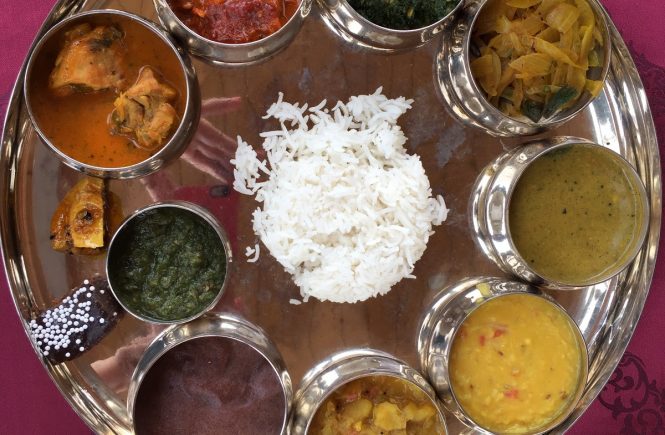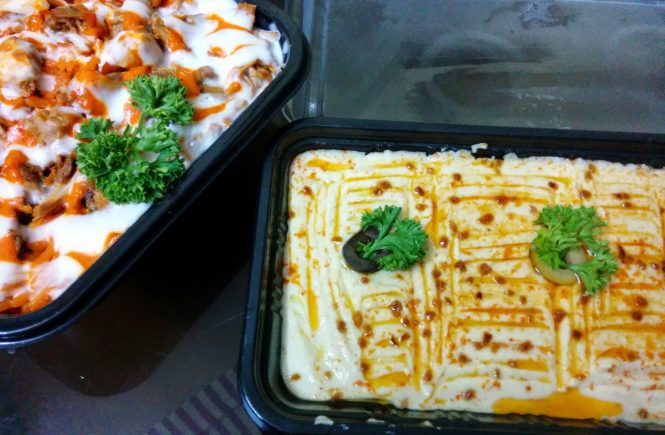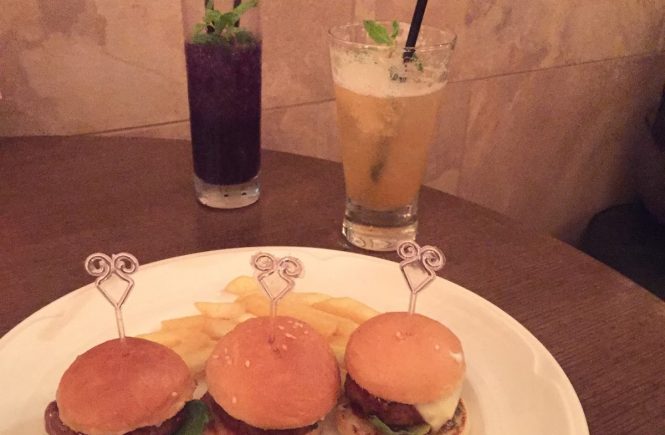It is not the mountain we conquer, but ourselves. ~ Sir Edmund Hillary
The mountains can be both awe-inspiring as well as overwhelming. Their grandeur can make you feel like an inconsequential speck in the larger scheme of things, which is exactly how I felt driving around in the Garhwal region of Uttarakhand during our four-day Culinary Soujourn of Garhwal. I, a self proclaimed beach bum with an exaggerated fear of heights, finally learnt to give in to nature, live in the moment and embrace the mountains. ‘Respect the mountains, and she’ll respect you back,’ my grandfather’s saying came echoing back to me.
Garhwal is a mountainous region in the state of Uttarakhand; it’s vibrant Garhwali culture has remained overshadowed and underexposed over the decades. Their simple, hearty cuisine and sustainable cooking methods are also lesser known among the larger population; which is why the Culinary Soujourn of Garhwal organized by the JW Marriott Walnut Grove Resort and Spa, Mussoorie in collaboration with Rushina Munshaw Ghildiyal of the APB Cook Studio was the perfect way to acquaint myself with their culture and cuisine. Along the way I fell in love with a region I knew very little about, a cuisine I had never eaten before, and people we never knew yet they welcomed us into their world with open arms. It was love at first sight. And/or first bite.
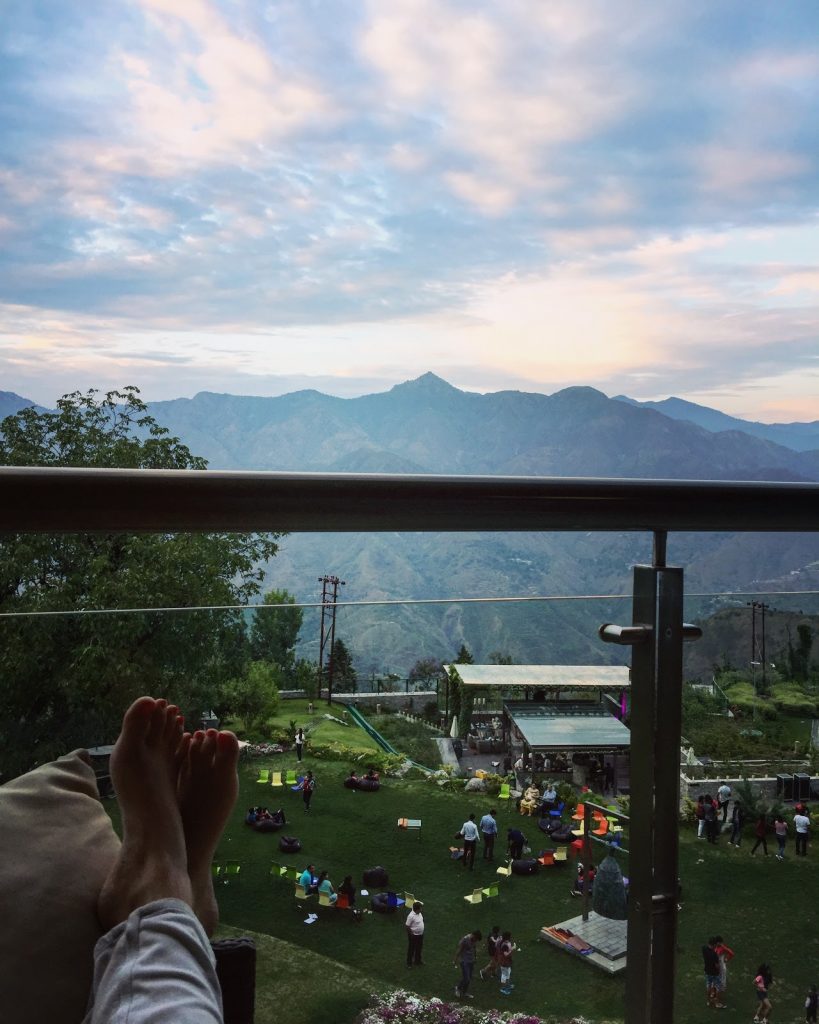
1. The Food
Garhwali food is ‘pahadi’ in every way: It is greatly influenced by the hilly terrain on which the crops are grown, and the seasonal changes that come with harsh winters and pleasant summers.
Garhwali food is ‘unpretentious’: It is cooked using local ingredients using simple techniques, with minimal spices and flavouring. The diet is primarily focused around vegetables and grains.
Garhwali food is ‘local’: Here vegetables are grown in the backyards of Garhwali homes, and picked out just before mealtime. The many meals we had during our stay here had ingredients sourced right from the gardens and smaller farms. The Garhwalis have been implementing techniques of sustainable farming and the farm-to-fork movement long before they came into vogue.
Garhwali food is ‘seasonal’: It’s heavier in winter and lighter in summer. Winter meals including heavier dals, meat dishes and leafy greens are prepared with the idea of keeping the body warm and satiated for a long time. Summer brings out lighter and easier to digest meal components (such as dals, gourds, buttermilk and curd preparations) that are cooling and nourishing.
Garhwali food is ‘predominantly vegetarian’: Characteristically, their diet is a grain and cereal based one. Fruits and vegetables add fiber to the diet while meat and fish are eaten in curries or as slow-cooked dishes during special occasions.
We were blessed that we got to experience three traditional Garhwali meals during our time in Mussoorie – two of these were cooked by local residents in their hilly village homes, while the third one was cooked by the chefs at the JW Mussoorie. All three meals were sublime, comforting and cooked with lots of love.
Meal #1
We climb up a steep set of steps, into a trapdoor-like entrance to enter a traditional Garhwali home. Therein appeared a large, elongated structure with rooms side by side, and a common passageway where we sat down to be fed. The matriarch of the house watched over us with the vision of a hawk, ensuring her daughters-in-law were feeding us enough. The entire wooden structure overlooked an ancient temple complex believed to be one of the first Shiva temples in the world, home to over a lakh Shivlingas. We were dining at the holy site of Lakhamandal.
The men of the house walked around with a vessel of water and a dish, ensuring we wash our hands before we begin our meal. The womenfolk begin serving us an assortment of breakfast dishes. First up, Udad ki Pakodi or deep fried pakodas made out of split Urad dal. Then there were these delicious pooris stuffed with gehat ki daal or horsegram called Swala, topped with oodles of desi white butter. Calories be damned! (They also served us another variant of Swala stuffed with a potato filling this time, at the JW Cafe.) This was followed by Ulua – savoury steamed dumplings stuffed with gehat ki daal or the sweet ones stuffed with a coconut filling very similar to the Ukadiche modakswe get back home. The icing on the cake was that flavourful apricot chilli chutney that we mopped up with rice papads. This breakfast in a century old house, with the mountains all around us, won’t be forgotten for a long time to come.

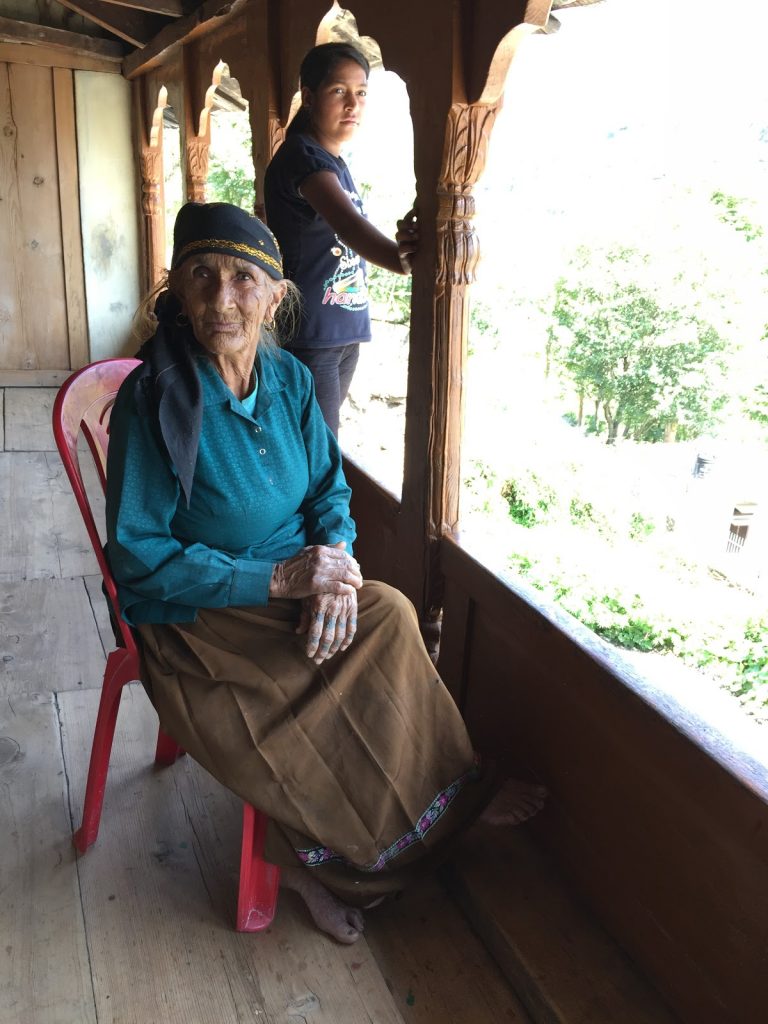
Meal #2
We climbed for our food yet again. This time down a narrow, treacherous path clutching onto a railing for support while the locals sniggered at us city folk for being such babies. We were at yet another Garhwali village called Pantwadi, for a snooze inducing lunch thali cooked by the women of the village. But not before we were made to witness a local song and dance ritual amidst lot of fanfare. Even after we trudged up yet another precipitous staircase for our meal, the village folk continued to dance and play the drums. It was like they were having a little party of their own.
Before we sat down for our lunch, a few of us got a glimpse into a typical rustic Garhwali kitchen complete with a wood fired ‘chullah’ and a large pot with a narrow neck called ‘bhaddu’ in which most of the cooking takes place. A tiny kitchen with barely any ventilation and a lot of smoke had a few of us coughing our lungs out immediately; not these strong women however, who went on with their business and cooked along with a smile on their faces.

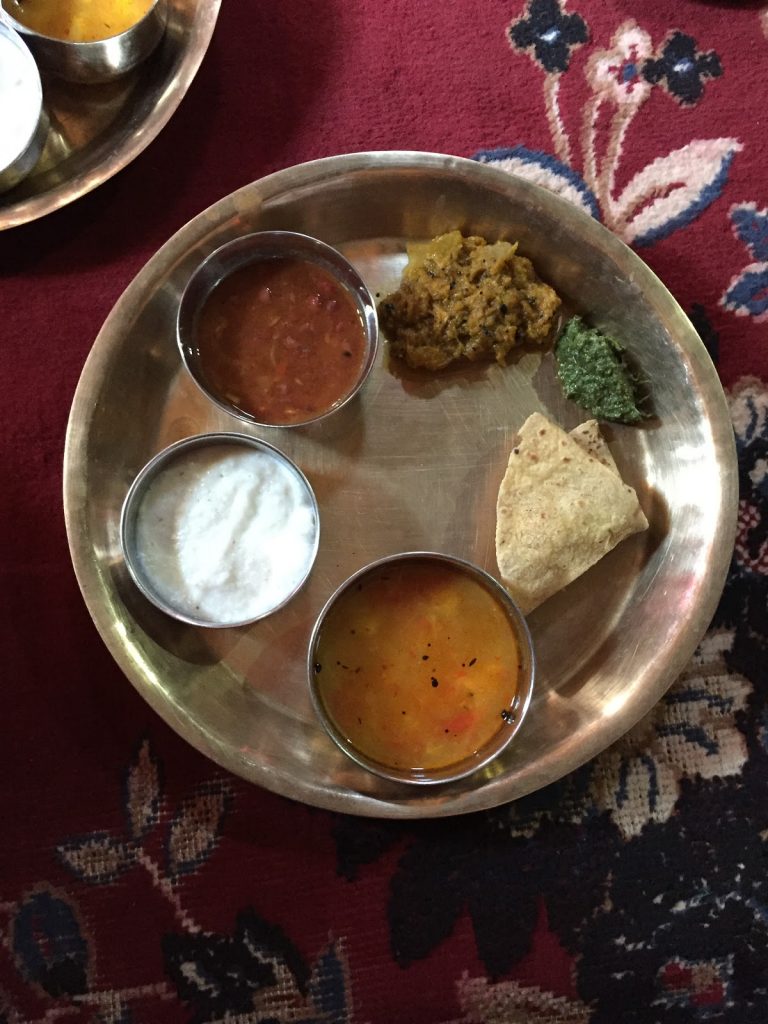
Lunch included a fablulous Rajma dish – mild in spice yet full of flavour, very different from the spice and oil laden variant of this dish we are used to. Then there was Aloo ki Thechwani – a smashed potato curry, Kaddu ki Sabzi – a flavourful pumpkin vegetable, and a fab Pudine ki Chutney – a mint chutney pounded on a silbatta stone. On the side we had some Makkai Roti slathered with white butter which seems to be some mandate for every meal in the mountains. Rounding off the meal was a Jhangore ki kheer – a milk based dessert made from local millets. The best part about the entire meal? The vegetables were grown in our host’s backyard! There’s something so inherently delicious in produce that is organic and home grown. I’ve never had such fresh tasting greens or a Rajma that tasted so wholesome before. It made the trek uphill to our cars a whole lot easier.
Meal #3
A beautiful rooftop restaurant overlooking the hills, the snow capped Himalayas glittering in the distance and a traditional sit down meal served in rustic dinnerware. Servers buzz around us refilling our thalis, while regional Pahadi songs play overhead with a meal that was fit for a king! In trademark Marriott style and hospitality we were made to experience traditional Garhwali cooking. All those skeptical about how closely a five star hotel would be able to replicate a home style meal, I have news: the JW Mussoorie kitchens have employed Garhwali women to work with them and train their kitchen staff in the finer nuances of cooking Garhwali cuisine.
Mr. Sunil Kumar – F&B Director at the property and a resident of Garhwal – painstakingly and passionately explained each component of the Garhwali thali. The stand out dishes from the elaborate thali included the simple but packed with flavour daal dish Chainsoo, the smashed potato curry Aloo Thechwani, a robust chicken curry Ghar ki Murgi and a simple onion stir fry dish whose name I fail to remember. An interesting item on the thali is the Kandli Ka Saag or a vegetable dish made from bichoo ghaas aka stinging nettle. Extra care needs to be taken in picking out the nettle leaves and blanching them in water lest the leaves sting you! We washed down our meal with a curry leaf buttermilk calledMattha, followed by Uttarakhand’s reduced milk sweet Baal ki Mithai.
The Garhwali thali at JW Cafe, JW Mussoorie is only available on request. Honestly, if you’re ever travelling to Mussoorie or around I see no reason why you shouldn’t stop by here for one fabulous meal that showcases the best of the Garhwali culinary experience.
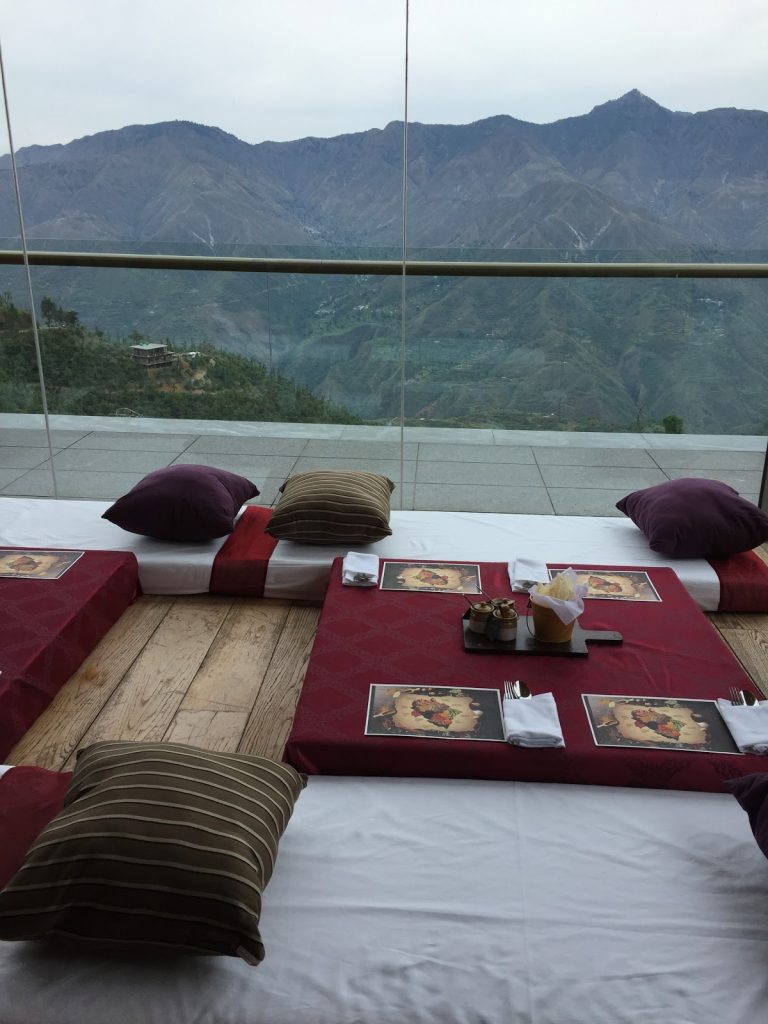


2. The Sights
Uttarakhand is like one giant, picture perfect postcard! As we drove around the mountains, the city girl in me couldn’t help but fall in love with those simple sights. Narrow, winding mountain roads with vertigo inducing valleys on one side and towering mountain tops on the other, go on for miles at a stretch. A simple stream that bursts out of the mountains, gaining momentum as it flows downwards onto the roads. The only sound that you hear around you is that of the water gushing, birds chirping overhead, and the occasional honk of a vehicle coming from the opposite direction. Ahh Uttarakhand, you beauty!
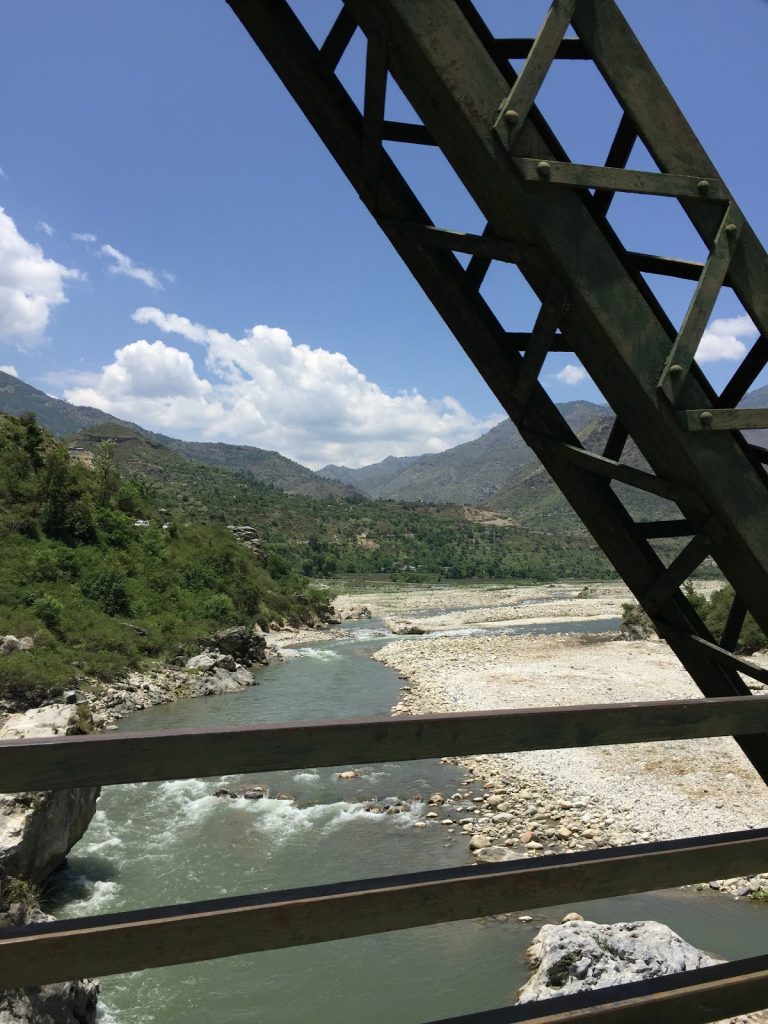

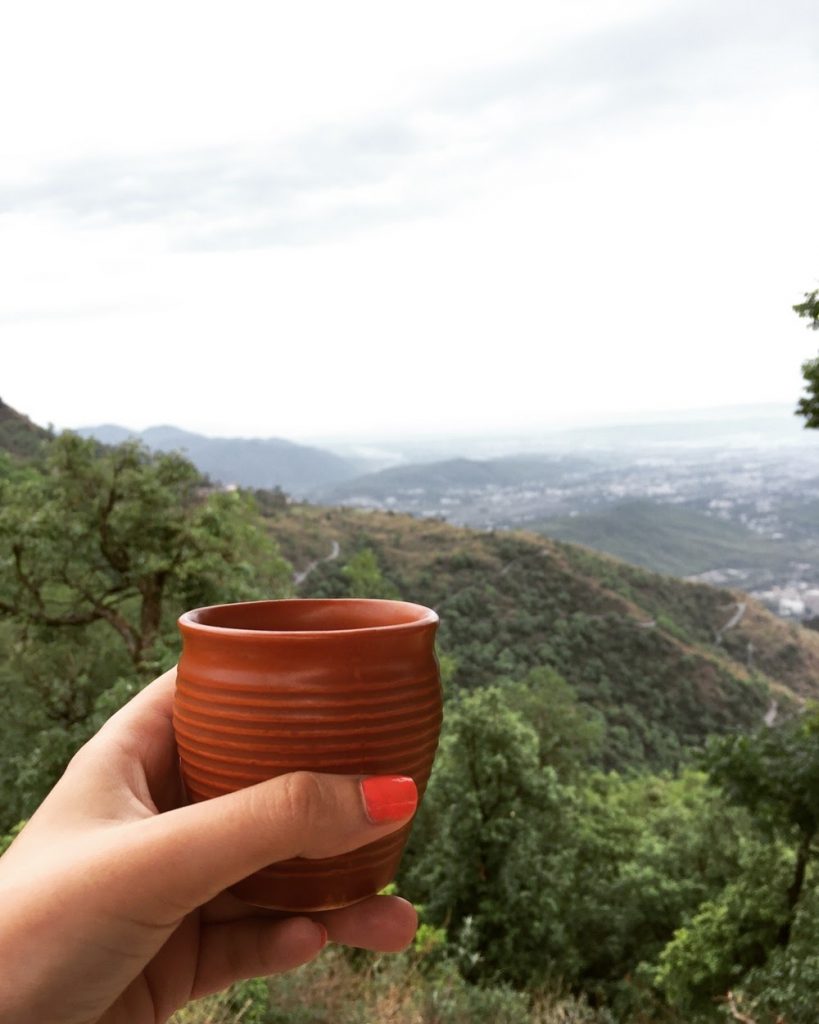
One such picturesque drive from Mussoorie led us to the holy village of Lakhamandal. Lakhamandal is believed to be one of the oldest temples of Lord Shiva, and home to over one lakh Shivlingas. Currently, the temple complex houses only over a hundred Lingams, the remaining are believed to have sunken underground during an ancient landslide. Excavation work in the area unearths a few more Shivlingas every year to add to the already existing number. A large graphite Lingam that reflects the surroundings when wet, is one of the main attractions here. This is one of the only temple complexes in the world that houses four differently coloured Shivlingas – green, red, white and black – originating from four different yugas or eras of the Hindi calendar. The star attraction here is a cave that apparently the Pandavas used to escape when Duryodhayan set their wax palace on fire.
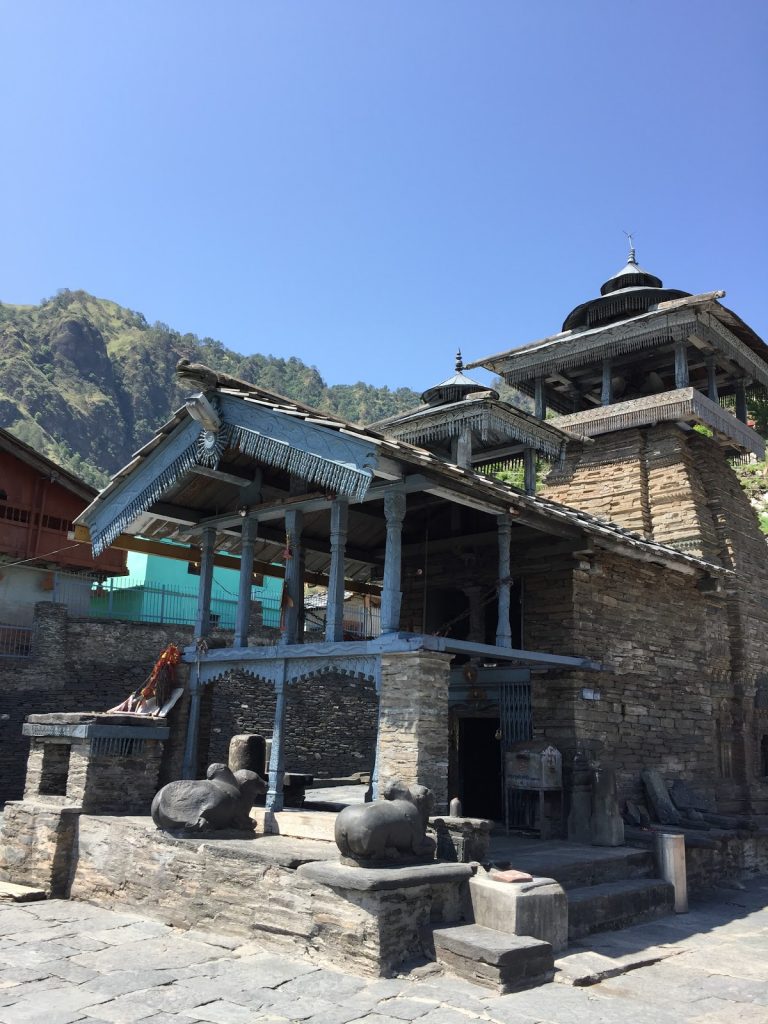
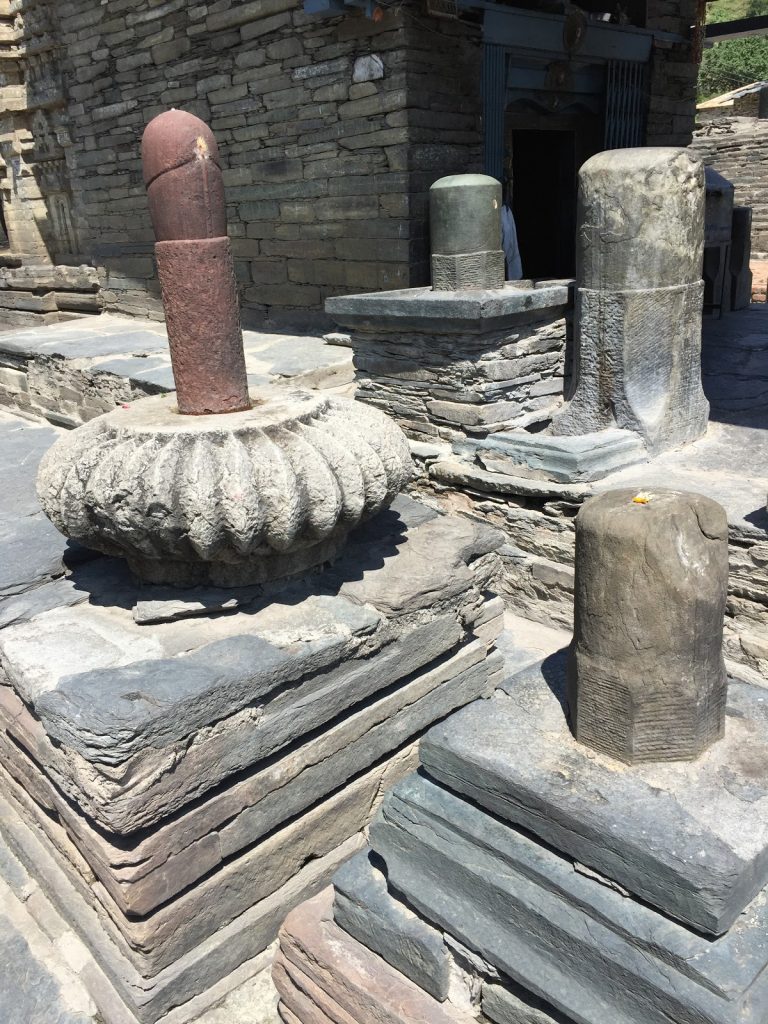
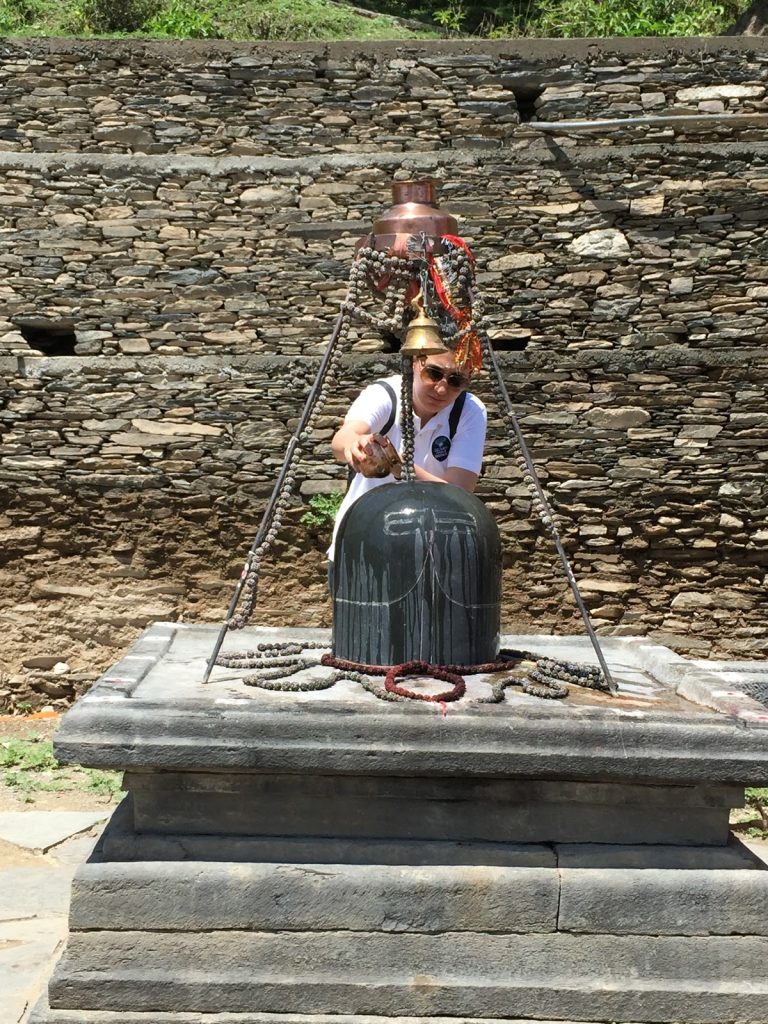
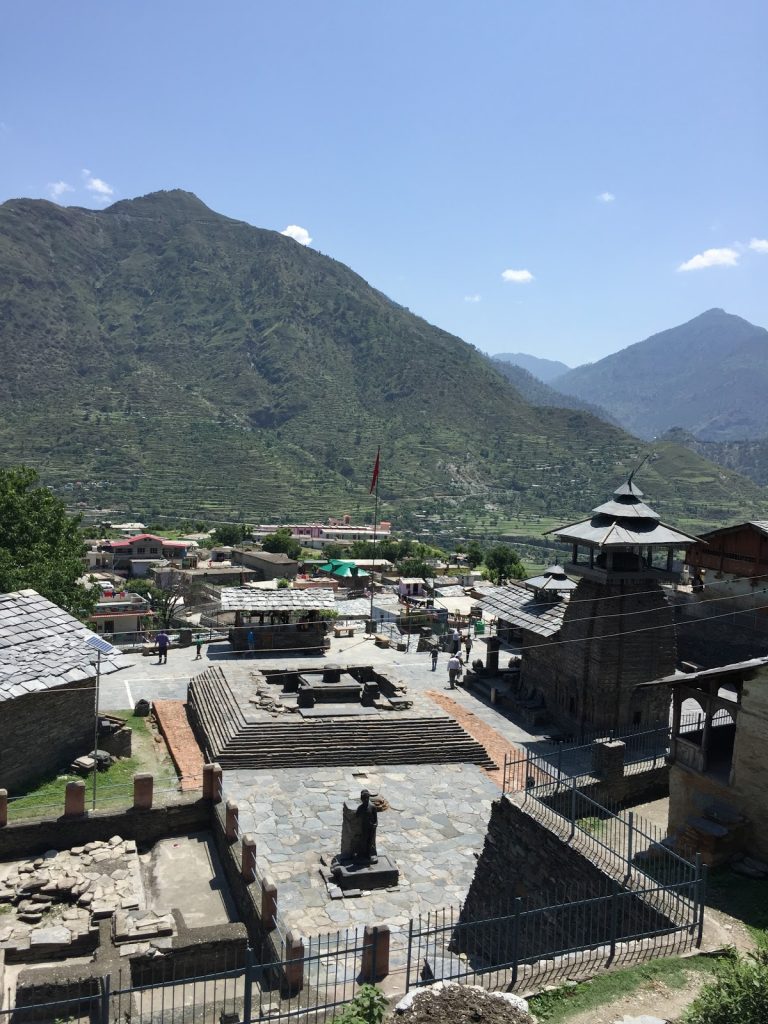
Another must-do item on your list should be the ‘Breakfast in the Stream’ that JW Mussoorie organizes for all their guests on request. No, not breakfast BY the stream, but IN the stream. We trekked down a slope for 20 minutes, which seemed a tad difficult for us beginners at first but the gentle breeze wafting around made it easier. And the sound of gushing water below invited us closer. We were treated to a breakfast set up right in the middle of the stream, complete with tables, chairs, a buffet counter and a singer with his guitar. Ohh, did I mention they were squeezing out fresh orange juice for us in the middle of the stream? With our feet embracing the pristine river water flowing below, our bellies feasted on parathas, freshly baked croissants, and omelettes being fried out right in the middle of the river.

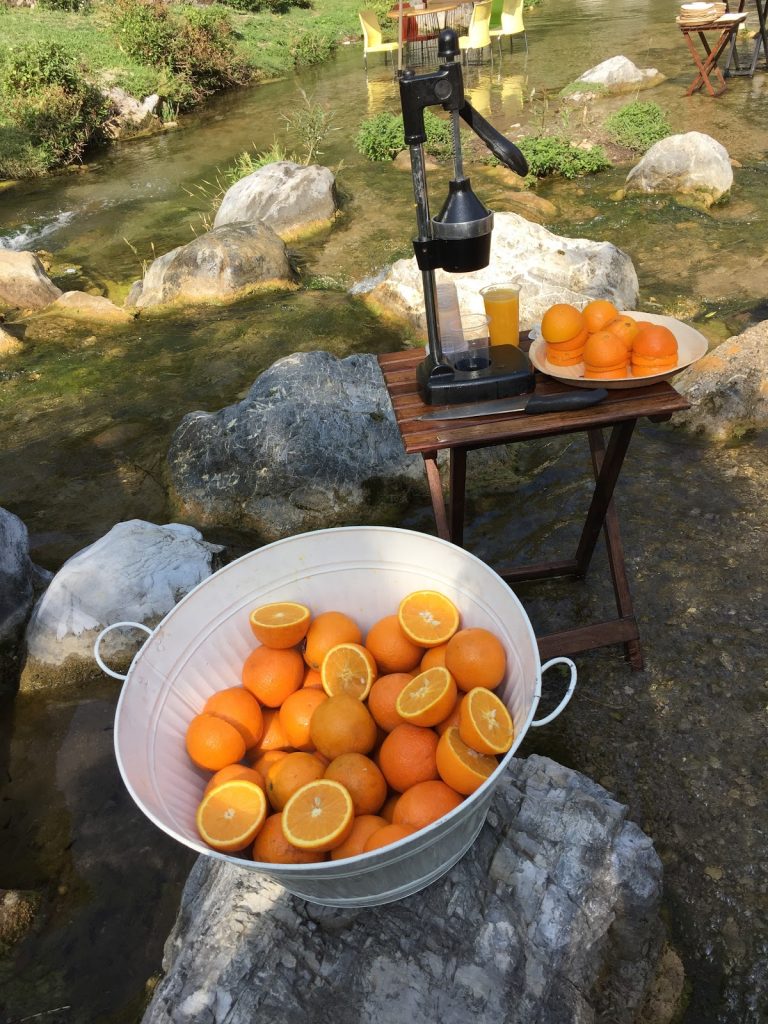
3. The People
What makes any place special are the residents that inhabit it. And what makes a trip memorable is the people you meet along the way, whom you’ll remember for times to come.
Like the fruit seller I met on our drive from Dehradun airport to the hotel. The young boy insisted on selling his wares while we grew frustrated in the traffic. He looked at me cheekily and said, ‘Madam cherry plum khareed lo. Traffic mein timepass ho jayega.’

And like the two local women who were employed in the JW Mussoorie kitchens, who chatted with us one evening. They answered all our questions regarding their customs, food habits and daily life with such enthusiasm while their elders looked on with pride.
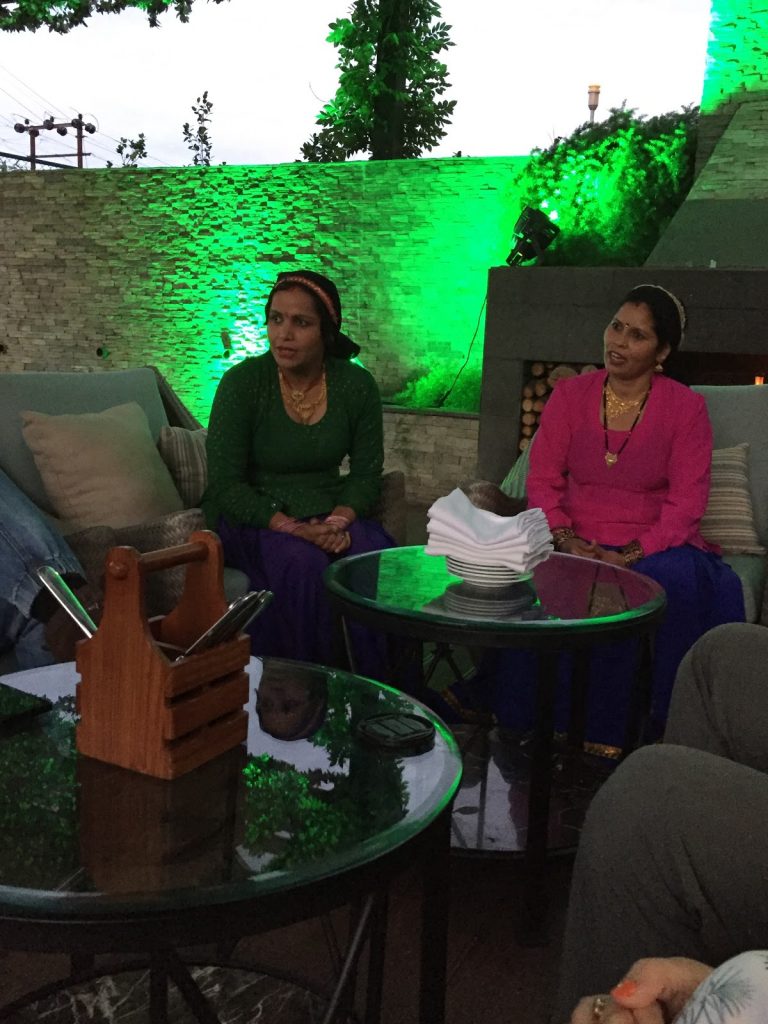
And like this lady I saw peering out of the window, staring at our group while we walked towards Lakhamandal temple. She coyly smiled back, after adjusting her head scarf when I politely requested her for a picture. Women will be women!
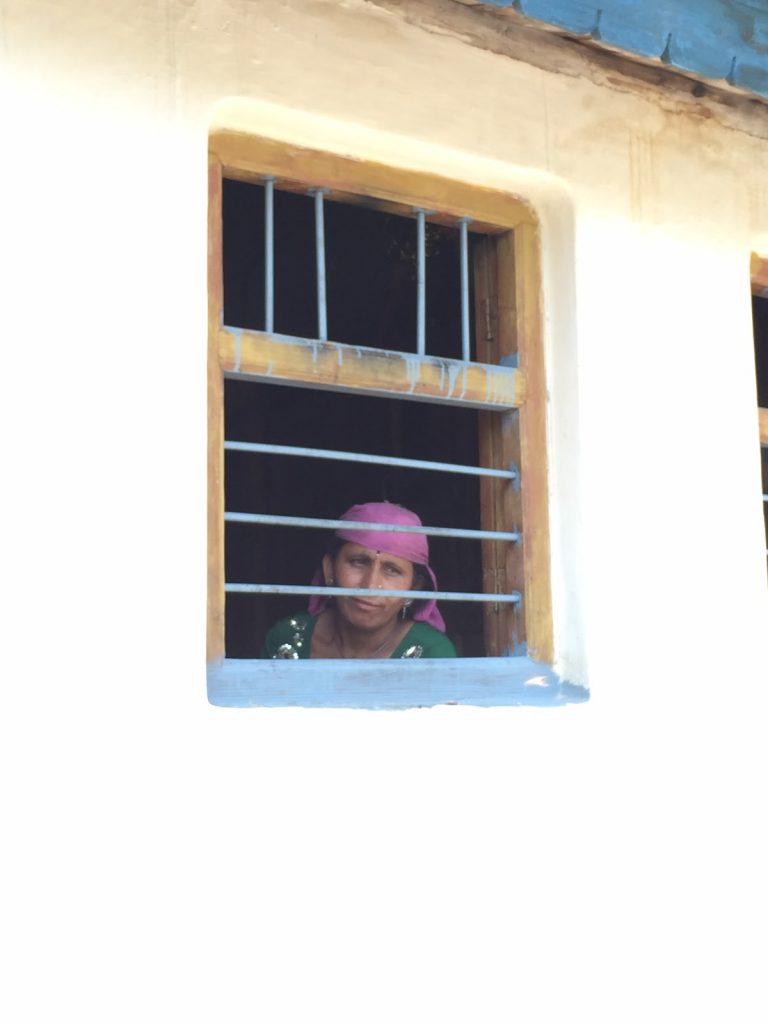
And like that old man with the pet mountain goat who urged me to go ahead and give his pet goat a pat on the head. And who posed for a selfie (or two) with the goat and me later, much to his amusement.
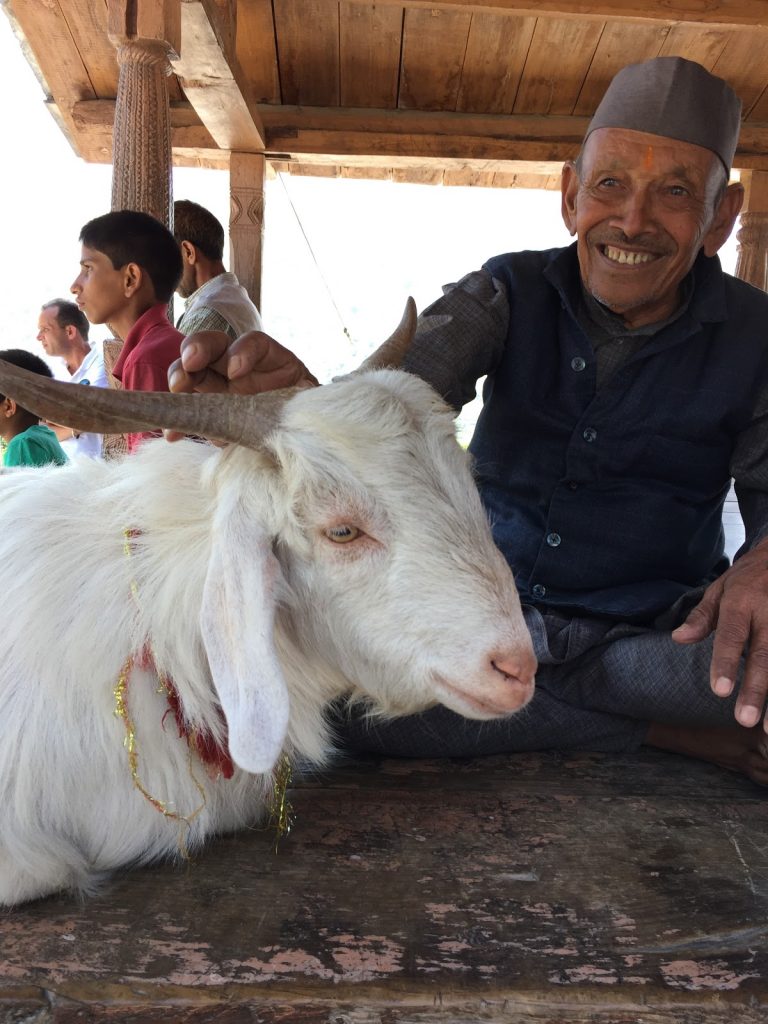
And like the fun loving group of men and women who welcomed us during our visit to Pantwadi. Our visit was just an excuse for them to let their hair down and party in the mountains to the sound of the drums. And I’m positive the party continued on even after we left. #YOLO
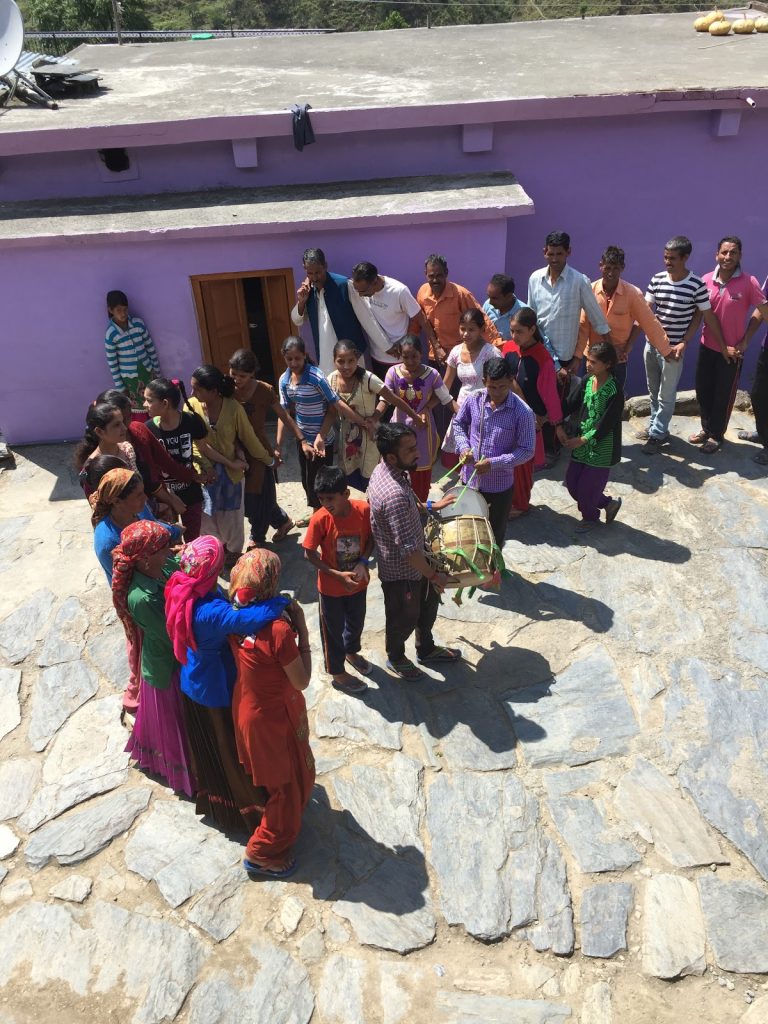

And lastly the entire team at JW Marriott Walnut Grove Resort and Spa, Mussoorie who made this entire Culinary Soujourn of Garhwal such a joyous and enriching experience. In collaboration with the wonderful Rushina MG, they ended up curating a fabulous four day exploratory journey across Garhwal.
Follow the hashtags #DiscoverGarhwaliFood and #ExploreGarhwal on Facebook, Twitter and Instagram for more information on our Culinary Soujourn across Garhwal.
You can check out the JW Marriott Walnut Grove Resort and Spa, Mussoorie property on their website here or just stay tuned for my next blogpost where I do a detailed review on the property.
Don’t forget to follow Rushina MG (@RushinaMG) on Twitter for all her food updates. And check out the fabulous work they do at the A Perfect Bite Cook Studio (@apbcookstudio) as well.

